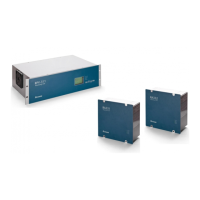2 RPV TOOLS DESCRIPTION
The RPV Tools are a suite of applications to be installed on the PC and allow the communication and the
transfer of records between several pieces of equipment and a PC. It also allows user to receive, manage,
edit, and transmit configurations of different pieces of equipment.
The suite consists of: Scanner, Configuration Tool, Fault Locator and GOOSE Configurator.
The Scanner is a tool that makes a sequential scanning of the records. It searches, transfers and saves the
records on the PC according to the user configuration.
The Configuration Tool allows user to receive, manage, save, and transmit the configuration between the
equipment and a PC.
The Fault Locator application allows user to define where an event has happened, based on traveling wave
records (two ends of the transmission line).
The GOOSE Configurator allows the user to configure the RPV in order for it to receive and filter GOOSE
messages Ethernet.
2.1 RPV TOOLS INSTALLATION
2.1.1 INSTALLING
The installation of the RPV Tools applications on the PC is performed with a special tool called Installer,
which is part of the software.
The minimum hardware requirements for the installation and execution of the RPV Tools are:
Supported operational systems
o Windows XP operational system Service Pack 2.
Applications
o Mozilla Firefox version 17.0 or higher;
o Adobe Flash Player version 12 or higher.
Minimum requirements
o Processor 1 GHz or higher;
o Minimum 512 MB RAM memory;
o Minimum 500 MB free space on disk.
The LENGTH, R0, X0, R1 and X1 text fields allow the user to enter the transmission line characteristics
(length and impedance), for the fault location.
The RPV311 uses one-end impedance fault location based on the Takagi algorithm

